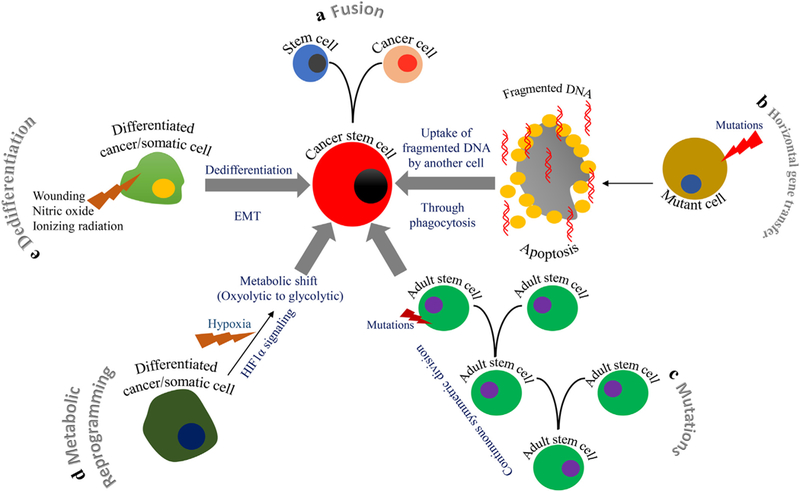Fig. 2.

Different modes of CSC origin. a) ‘Cell fusion’ is a process whereby two cells (one stem cell and another cancer cell) fuse together to form CSCs. b) In horizontal gene transfer, mutant fragmented DNA (from a mutant somatic cell that is undergoing apoptosis) is taken up by another somatic or cancer cell, leading to the emergence of CSCs. c) Continuous symmetric divisions in adult stem cells (ASCs) lead to mutation in these cells and give rise to CSCs. d) A metabolic shift in somatic or differentiated cells could reprogram these cells into CSCs. e) Ionizing radiation, wounding, or exposure to toxic chemicals can de-differentiate somatic cells into CSCs.
